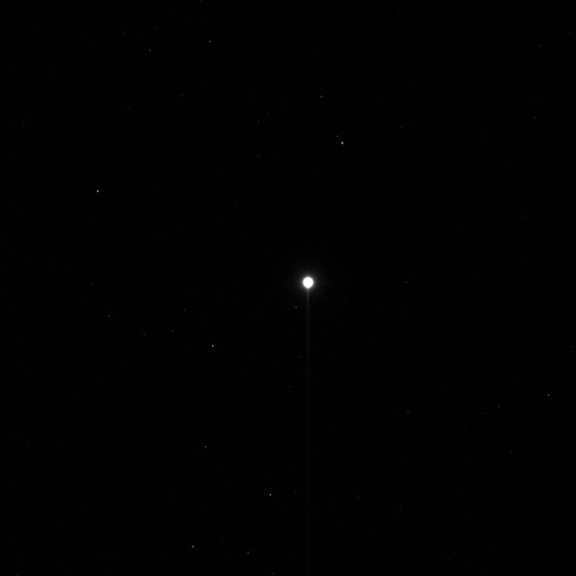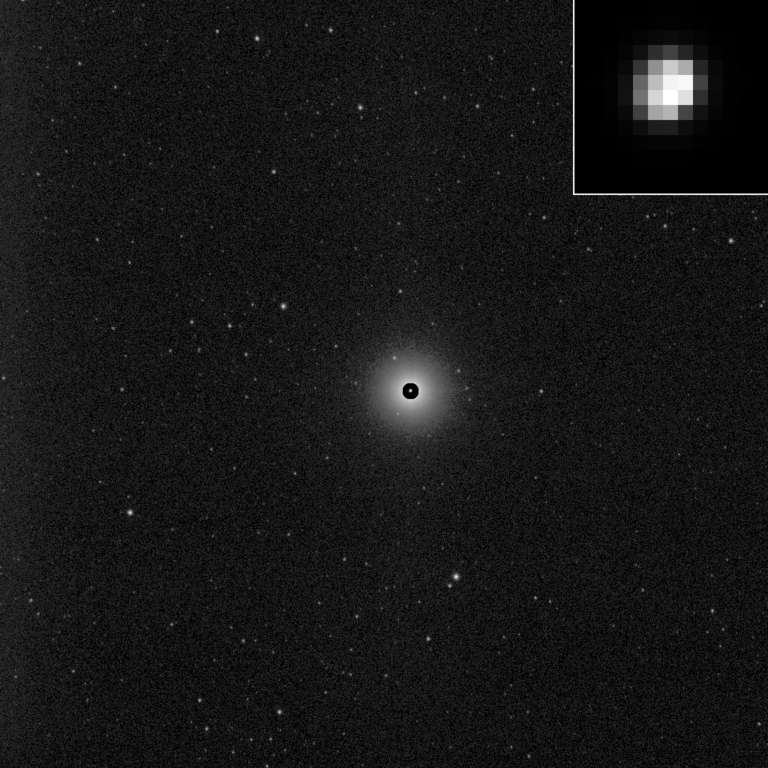Emily Lakdawalla • May 11, 2011
Land ho!
It's hard to convey just how excited I am to see Dawn's first image of asteroid Vesta. In itself the image is not particularly noteworthy, just a few pixels' worth of sunlight brightly reflecting off a lonely asteroid; and it's not yet as detailed as what we've seen from Hubble. But what this image means! I titled this post "Land Ho" because Dawn has finally sighted the land toward which it's been cruising for three and a half years, but it means more than that. This isn't just the first sighting of Dawn's island destination; it's the first sighting of a whole new archipelago, the unexplored large islands of the asteroid belt. We've never seen a world like Vesta before, and over the next few months, as Dawn approaches it, it'll slowly come in to focus before our eyes. I can't wait!!

In the photo, Vesta is so bright that if you brighten the image enough to see background stars (which are mostly within the constellation Scorpio), Vesta becomes a fuzzy blob. So the Dawn team released a version of the image where Vesta and the background have been processed separately. Compared to the "unprocessed" version above, the area around Vesta has had its brightness reduced so you can see the actual size of the asteroid, and the rest of the image has had the brightness massively increased to reveal more background stars. In the upper right corner is an enlarged view of the few pixels that span the asteroid. Not much yet, but it's growing in Dawn's field of view every day.

This seems like an appropriate moment to brush up on the capabilities of Dawn's main cameras. Dawn's unusual among NASA missions in that most of the science instruments that it carries (if you can use the word "most" to describe two out of three) were built outside the U.S. The Framing Cameras, as they're called, were built in Germany. In an early Dawn Journal, Marc Rayman explained that the Max-Planck-Institut für Sonnensystemforschung (Max Planck Institute for Solar System Research) was responsible for their design and fabrication, in cooperation with the Institut für Planetenforschung (Institute for Planetary Research) of the Deutsches Zentrum für Luft- und Raumfahrt (German Aerospace Center) and the Institut für Datentechnik und Kommunikationsnetze (Institute for Computer and Communication Network Engineering) of the Technischen Universität Braunschweig (Technical University of Braunschweig). That's where the "MPS / DLR / IDA" in Dawn image credits comes from.
I found a very nice poster (PDF) that explains the capabilities of the Framing Cameras in pretty good detail. Dawn has two identical Framing Cameras (FC1 and FC2) for redundancy in case one fails. The detectors are 1024 pixels square, and they're each fitted with an eight-position filter wheel containing seven color filters (blue to near-infrared) and one clear (broadband) filter. The field of view is 5.5 degrees (96 milliradians) so the angular resolution is 94 microradians. This choice of field of view and resolution is fitting for its purpose as a camera to be used for completely mapping a body from orbit. In High Altitude Mapping Orbit, from 660 kilometers, that angular resolution will result in pixels 62 meters across. In Low Altitude Mapping Orbit, from 180 kilometers, it'll achieve a maximum resolution of 17 meters per pixel, but it won't get global coverage at that resolution.
Let the mapping of a new world begin!
The Time is Now.
As a Planetary Defender, you’re part of our mission to decrease the risk of Earth being hit by an asteroid or comet.
Donate Today

 Explore Worlds
Explore Worlds Find Life
Find Life Defend Earth
Defend Earth

